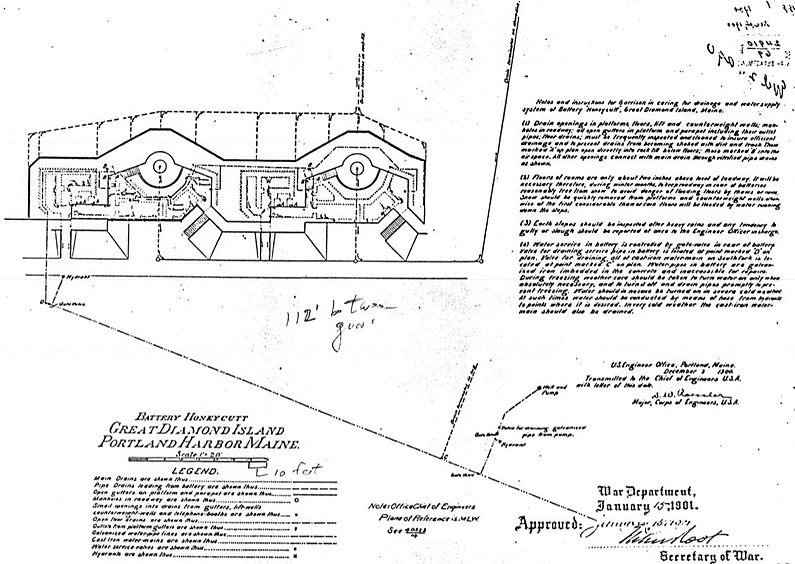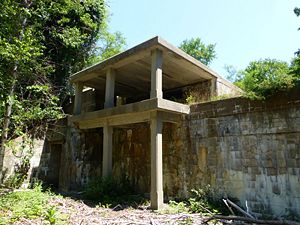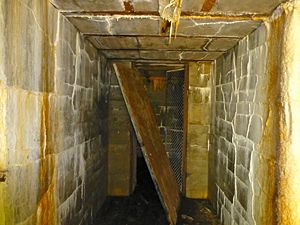Battery Honeycutt
|
Battery Honeycutt (1898-1942) - Battery Honeycutt was a reinforced concrete, Endicott Period 8 inch coastal gun battery on Fort McKinley, Great Diamond Island, Cumberland County, Maine. The battery was named in G.O. 43, 4 Apr 1900, after Captain John T. Honeycutt, 6th U.S. Artillery, a distinguished artillerist, who died 12 Oct 1898, of typhoid fever contracted in the faithful performance of duty in the field. Battery construction started in 1898, was completed in 1901 and transferred to the Coast Artillery for use 22 Jan 1901 at a cost of $ 96,385.61. Deactivated in 1942.
Endicott Period (1890-1910)Part of the Harbor Defense of Portland, Maine. Originally built as an Endicott Period concrete coastal gun battery with one 8" M1888MI gun and one 8" M1888MII gun each mounted on a M1896 Disappearing carriage. This was a two story battery with the guns located on the upper level and the magazines below. Shells were moved from the magazine level to the gun loading platform by two Taylor-Raymond front delivery shell hoist. No powder hoists were provided. Electrical power was furnished by the central power plant.

World War I (1917-1918)The U.S. entry into World War I resulted in a widespread removal of large caliber coastal defense gun tubes for service in Europe. Many of the gun and mortar tubes removed were sent to arsenals for modification and mounting on mobile carriages, both wheeled and railroad. Most of the removed gun tubes never made it to Europe and were either remounted or remained at the arsenals until needed elsewhere. The two 8" guns of Battery Honeycutt were listed to be dismounted for use abroad but were later ordered retained. World War II (1941-1945)Battery Honeycutt was obsolete at the beginning of the war but remained a part of the Harbor Defenses of Portland plan until declared no longer required and ordered salvaged on 6 Nov 1942. The guns were transferred to Watervliet on 7 & 8 Jun 1943 and the carriages were ordered salvaged on 15 Dec 1942. Current StatusMostly private property on Great Diamond Island, Cumberland County, Maine. No period guns or mounts in place.
Sources:
Links: Visited: 1 Jul 2012
| ||||||||||||||||||||||||||||||||||||||||||||||


